Natural Building since the mid-14thC, Stone Villages of Britain.
|
|
| |
|
|
|
Arlington Row, Bibury,
England |
|
|
|
|
| |
|
These homes, built entirely from natural materials, are over
600 years old. William Morris called Bibury,
"The most beautiful village in England". The picturesque stone
cottages of Arlington Row were built in 1380 originally as a
monastic wool store but later converted into a row of cottages for
weavers in the 17th century. |
|
|
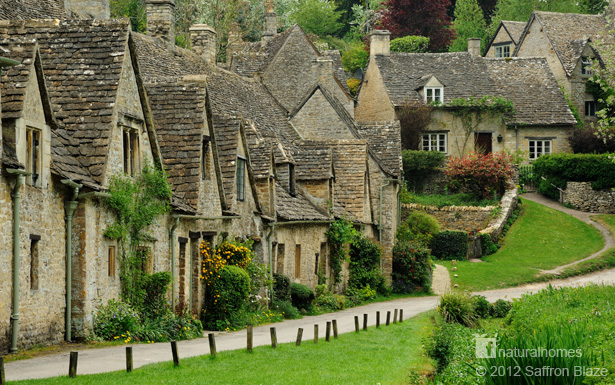 |
|
|
|
|
|
|
|
|
|
|
|
|
|
Gold Hill in Shaftesbury,
England |
|
|
These are the stone cottages of Gold Hill in Shaftesbury,
England a market town founded by King Alfred the Great in 880. The
homes date from the mid-15th Century. They are built from local
greenstone, a pale yellow sandstone that turns green when it is
freshly exposed to the air. The floors are supported on oak beams
and the roofs are either slate or thatched. Gold Hill found
a place deep in the English psyche when it was chosen nearly 40
years ago by a bread baker for their TV advert.
| |

|
|
| |
HOVIS TV advert, 1973 |
|
To the right of this picture are the massive ramparts of Shaftesbury Abbey where
King Canute died.
|
|
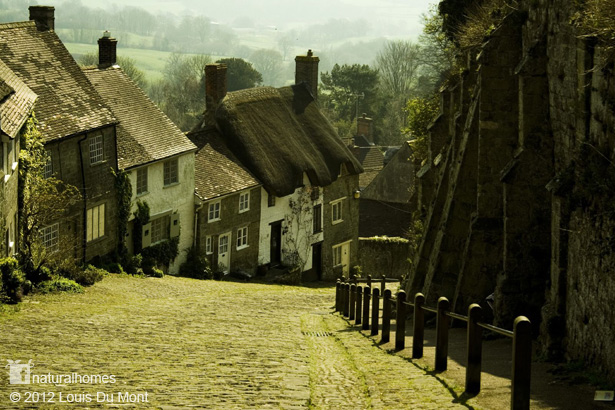 |
|
|
|
|
|
|
|
|
|
|
|
|
|
Castle Combe, England |
|
|
The wonderful thing about stone is you can use it again and again
and again. This is a repurposed English village. In the mid-12th
century the Normans built a castle here on the site of a Roman
Villa abandoned in the 5th century. By the mid-14th century the
stones of the castle were used to build the village of
Castle Combe. If you think the village is familiar
it's because it was the set for the 1960's film 'Doctor Doolittle'
and more recently 'Stardust' in 2008 and 'War Horse' in 2011.
There's a lovely collection of pictures courtesy of the
village Inn.
| |
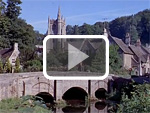
|
|
| |
Castle Combe, Pathe News 1962 |
|
|
|
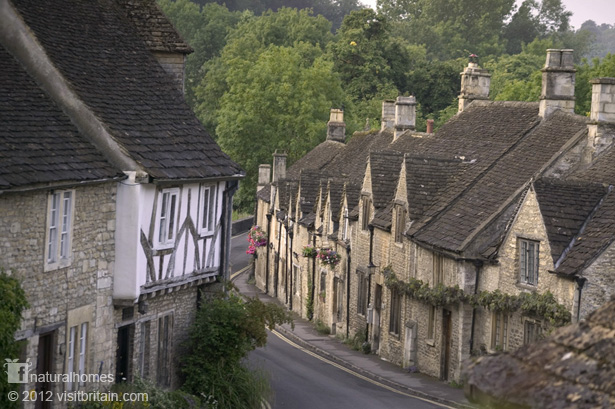 |
|
| |
|
|
|
|
|
| |
|
|
|
Garenin, Isle of Lewis,
Scotland |
|
These are the
blackhouses of Garenin on the Isle of Lewis, Scotland. They were
originally designed to house people and livestock in the same
building with a partition between them. Low rounded roofs,
elaborately roped with stones, were developed to resist the strong
Atlantic winds. Originally without chimneys, the smoke made its
way through the roof. The traditional village has now come back to
life after they were restored by the
Garenin Trust.
|
|
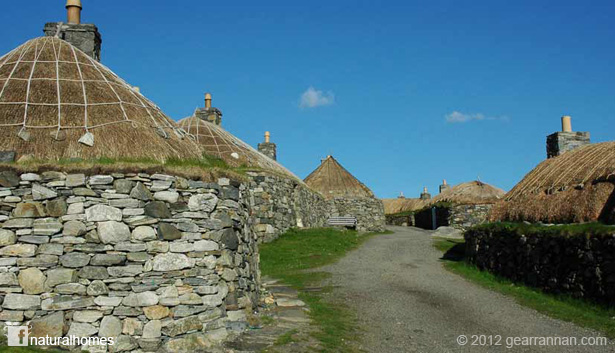 |
|